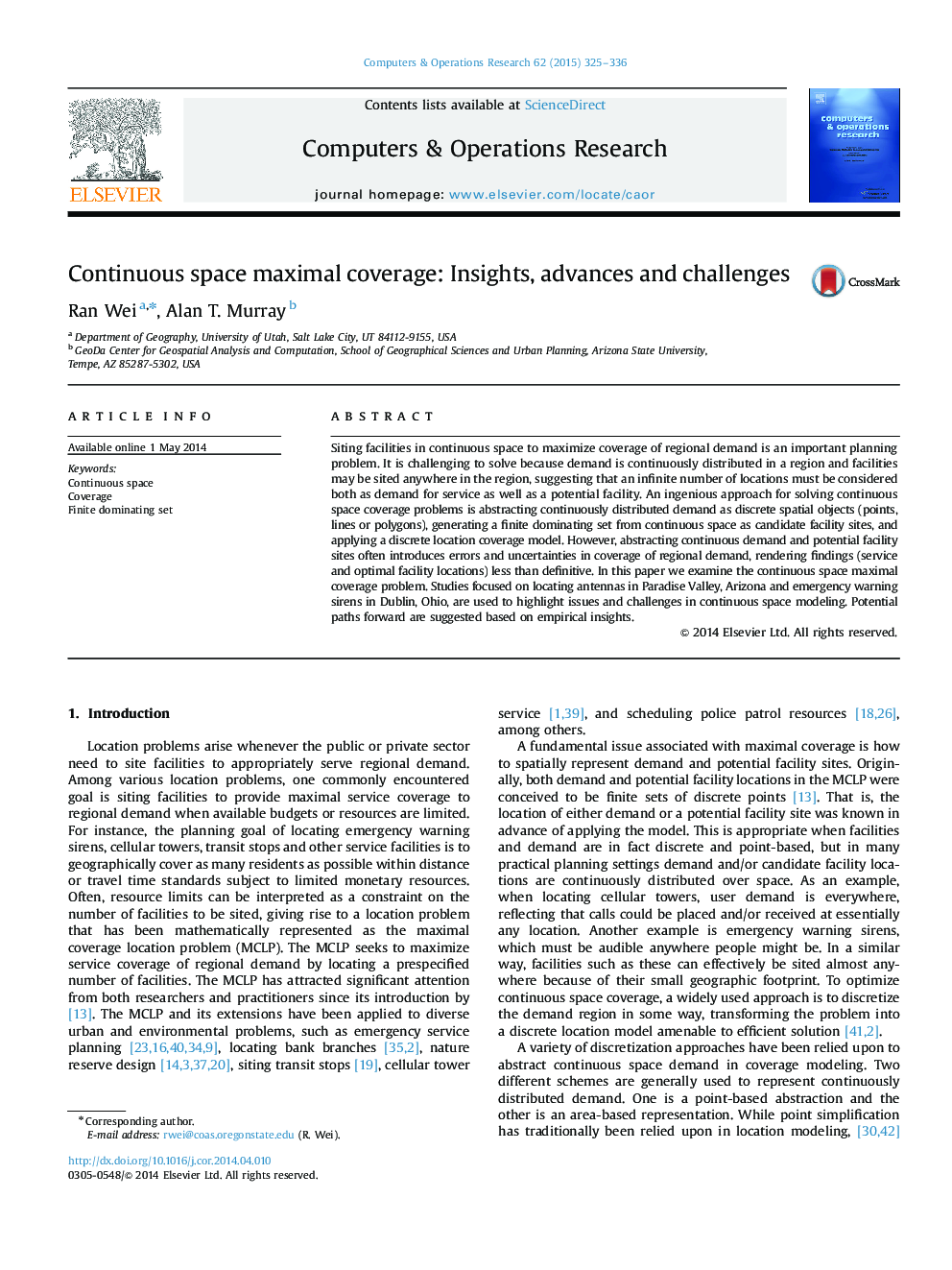| Article ID | Journal | Published Year | Pages | File Type |
|---|---|---|---|---|
| 475684 | Computers & Operations Research | 2015 | 12 Pages |
Siting facilities in continuous space to maximize coverage of regional demand is an important planning problem. It is challenging to solve because demand is continuously distributed in a region and facilities may be sited anywhere in the region, suggesting that an infinite number of locations must be considered both as demand for service as well as a potential facility. An ingenious approach for solving continuous space coverage problems is abstracting continuously distributed demand as discrete spatial objects (points, lines or polygons), generating a finite dominating set from continuous space as candidate facility sites, and applying a discrete location coverage model. However, abstracting continuous demand and potential facility sites often introduces errors and uncertainties in coverage of regional demand, rendering findings (service and optimal facility locations) less than definitive. In this paper we examine the continuous space maximal coverage problem. Studies focused on locating antennas in Paradise Valley, Arizona and emergency warning sirens in Dublin, Ohio, are used to highlight issues and challenges in continuous space modeling. Potential paths forward are suggested based on empirical insights.
